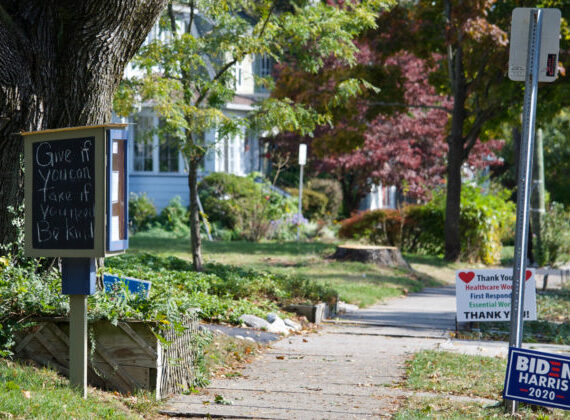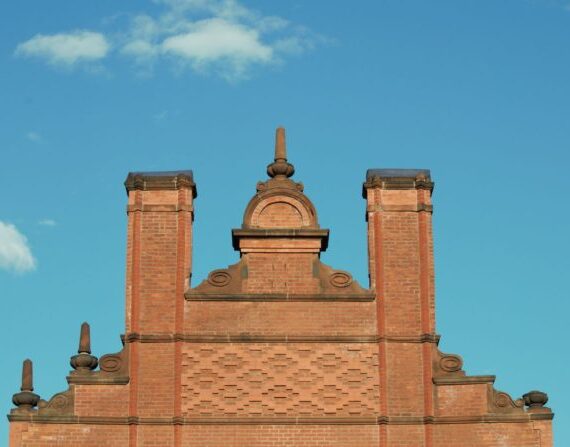On a recent summer morning I was walking through Hartford’s West End, admiring the front yards on one block where not one or two, but multiple residents opted for lively spaces instead of aesthetically and scientifically boring cookie cutter lawns. American Goldfinches burst out of the vegetation, zipping over to the next yard. Without the ruckus of rush hour traffic, I could hear birds and insects along my walk — louder in some pockets than in others.
The strangeness hit when I went into Elizabeth Park. Besides geese and a few ducks, there weren’t so many birds around. The plants were there, most of which looked nice, but I had to wonder what was going on. Only minutes, not hours, elapsed between places that seemed alive and a park that felt, mostly, overly manicured.

Nasty little yellow signs told me that the rose garden area had been treated with pesticides. Loud machinery was in the perennial garden, and more of those signs were in the ground there. I removed myself from those poisoned spaces, hoping to see more signs of life elsewhere in the park.

The herb garden fared better, bees galore. I could hear some birdsong in the Western Loop; that was not surprising. At its center are wetlands that have not been turned into lawn. There, you can see lots of Joe-Pye Weed and some New York Ironweed right now. Beyond the marshiest part of this section there had been a lawn, mowed regularly, even though few would ever walk across it. The ground is perpetually moist. In the last few seasons, it seems the City of Hartford decided to stop wasting time, energy, and money mowing it. They popped a few “low mow area” signs into the ground and aside from maintaining a few feet next to the walking paths, ignore it. This is a nice start, but could be made better if expanded into the picnic area where stubbornness is the only explanation for why we continue to see tables and grills.
This walk, like most in the park, left me with questions. Why in this day and age do we continue to put poison in public parks? Why allow impervious pavement in a public park, which no doubt adds to the mushy lawn issue? Why do we insist on rose gardens that are only roses and grass lawn? Who decides what kind of land use is best or most beautiful?

I am not alone in questioning these norms, as evidenced by residents near the park whose yards feed the birds. More broadly, I have a number of friends who have converted significant parts of their front, side, and backyards to be more bio-diverse landscapes; they live in Hartford, in suburbs, and in more rural areas.
The No Mow May movement has worked as a low stakes, easy entry for many to get radicalized and mentally prepared to make more lasting and impactful changes. For those wondering what that next step might be, here it is: at the start of August, the Less Lawn, More Life Challenge began; it’s eight weeks long and people can join late because why not.
What the Less Lawn, More Life Challenge does is provide education, encouragement, and support for those looking to create more sustainable landscapes — whether that means in a yard, balcony garden, or community garden plot. There are six “targets”, and people are asked to do what they can with the understanding that not everyone is going to hit every single target. These include: reduce lawn, add native plants, remove invasives, transition lawn care practices, plant a tree, and stop using harmful chemicals. Most of those actions are entirely free for those who are able to do the physical labor, and planting trees and native plants can be done for free or cheap by those willing to do a little sleuthing to see what is available to them. Local gardening and Buy Nothing groups on social media are places to watch for free seedlings.
The LLML Challenge provides resources, including videos, that are geared for beginners and answer basic questions. For instance: ticks. In one of their videos, they explain that you are not going to create a deer tick hellscape if you decide to stop mowing your grass, and, they provide information about the kinds of places where you will find them so you can better avoid ticks. For those who want it, there is a Facebook group set up so participants can ask questions and receive support throughout the challenge.

Ecological Horticulturalist Rebecca McMackin has called the standard American suburban-style lawn a “lack of imagination,” clarifying that “lawns should be area rugs, not wall-to-wall carpets.”
Is it a sign of good living to hear lawn mowers and leaf blowers constantly? To see every other yard bearing a yellow “we poisoned our lawn” shame flag? To insist on ecological dead zones for the sake of conformity?
If Yale Peabody, the Brooklyn Museum, and Brooklyn Bridge Park can change up their vegetation, so can those who don’t need to get board approval to change their green spaces.


